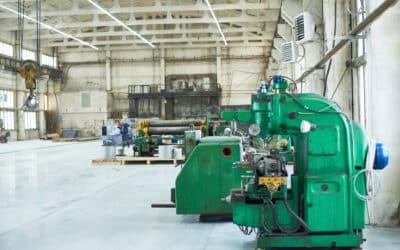Introduction – Why Compare Lean and Agile Today?
The emergence of two methodologies to address modern industrial challenges
Faced with increasingly complex markets, technologies and customer expectations, industrial companies are seeking to become more agile, efficient and adaptable.. It is in this context that Lean and Agile have established themselves as two essential methodologies for structuring work, streamlining processes and maximizing the value delivered to the customer.
Lean, derived from the Toyota Production System, was developed in response to the challenges of repetitive, demanding production. It is based on the elimination of waste, standardization and continuous improvement. Agile, on the other hand, was born in the 2000s in the world of software development. It focuses on a team’s ability to manage change, deliver products or functionalities frequently, and adapt its work cycles to changing customer needs.
These two approaches, although fundamentally different, are based on the same desire: to put customer needs and responsiveness at the heart of the organization.
These two approaches, although fundamentally different, are both based on the same intention: to refocus the organization on customer needs and responsiveness.
Companies that succeed in leveraging both Lean principles principles and Agile values succeed in aligning strategic vision with on-the-ground execution. Here are the shared benefits they can achieve:
- Performance performance performance
- Reducing time time to market for a product
- Strengthening team collaboration around a objective
- Better visibility of flows and bottlenecks
- Ability to adapt quickly to unforeseen events or changing priorities priorities
➕ Did you know?
In the pharmaceutical industry, some laboratories combine a Lean approach to production line management with an Agile method, such as Scrum, for the development of new medical devices. The result: better management of deadlines and costs, while remaining compliant with standards.
Understanding the Lean Method
Origin and Foundations of Lean
Lean Management is a work organization method that originated in the Japanese automotive industry, more specifically at Toyota.. Faced with the need to produce better, faster, and with less waste, Toyota developed the Toyota Production Systema model based on the systematic elimination of non-value-added tasks, the optimization of flowsandcontinuous improvement. This model was gradually formalized into a Lean approachapproach, now deployed far beyond the automotive industry, in healthcare, services and energy.
The 5 Key Principles of Lean Thinking
- Identifying value from the customer’s customer
- Mapping the value chain to detect waste
- Create a smooth seamless production flow
- Pull flows based on actual demand (“pull” logic)
- Striving for perfection throughcontinuous improvement
➕ Checklist: Are you Lean?
✅ Do you clearly understand what creates value for your customers?
✅ Have you identified the unnecessary steps in your processes?
✅ Is your production triggered by actual customer demand?
✅ Are your team members involved in the improvement of tasks?
Concrete Applications in Industry and Production
Lean is particularly well-suited to the realities of the industrial shop floor. Here are some common use cases:
- Optimization of OEE (synthetic rate of return)
- Reduction of microstops and series changes
- Decrease in dormant inventories and work-in-progress
- Improved management daily tasks
- Elimination of unnecessary operator movements
➕ Case study
At Nutriset, thanks to the integration of a PerfTrak system , teams were able to eliminate hundreds of micro-stops per shift, significantly improving their efficiency and useful time.
Operational benefits of Lean Management
| 🎯 Benefits | 📏 Measurable impact |
|---|---|
| Reduced waste | Less downtime, less scrap |
| Improved flows | Better fluidity and fewer delays |
| Time savings for teams | Automated repetitive tasks |
| Operator involvement | Suggestions for continuous improvement |
| Enhanced performance visibility | Real-time dashboards |
➕ Key figures
On average, our industrial customers see increase of +10 to +15 points in OEE within 3 months of implementing Lean solutions such as PerfTrak.
Understanding the Agile Method
The Agile Manifesto: Core Values and Principles
Agile is based on a manifesto drawn up in 2001 by 17 software development experts. It proposes an iterative, customer-centric approach, favoring adaptability in the face of change.
| ❤️ Values | 🔧 Associated principles |
|---|---|
| People and their interactions rather than processes | Enhanced collaboration and communication |
| Functional software rather than exhaustive documentation | Focus on delivered value |
| Collaboration with the customer rather than contractual negotiation | Ongoing customer involvement |
| Adapting to change rather than following a plan | Responsiveness and continuous improvement |
➕ Myth vs Reality
Myth Agile = absence of structure
Reality Agile is based on a strong disciplinediscipline regular rituals and clear clear objectives. It is a framework, not improvisation.
Popular Agile Methods: Scrum, Kanban, SAFe…
- Scrum Scrum: ideal for complex projects with teams ≤ 10 people, structured around sprints and rituals (daily, review, retro).
- Kanban: focused on workflow visualization , perfect for continuous production and real-time task management.
- SAFe designed for large companiesThe SAFe solution enables agility to be deployed at scale across several teams or departments.
➕ Practical tip
➡️ Choose Scrum to structure a project with deliverables.
➡️ Prefer Kanban to optimize an existing process.
➡️ Use SAFe if your organization requires multi-team management.
Agility as a response to uncertainty
In a context where needs evolve rapidly, the Agile approach avoids the time wasted by rigid planning. The team works in short cycles, regularly integrating customer feedback, and adjusting the product according to priorities.
🛠 Example An industrial manufacturer wishing to digitize its checklists can use Scrum to develop a first version, quickly test it in the field, then improve the tool according to operators’ feedback.
Agile applications beyond IT
| 🏢 Domain | 🚀 Agile application example |
|---|---|
| HR | Experimenting with onboarding or iterative recruitment processes |
| Maintenance | Setting up weekly feedback and priority adjustment routines |
| Production | Visual control of ongoing tasks via Kanban boards in the field |
➕ Expert advice
Start small. Adopt an agile ritual in a single team (e.g. daily meeting). Measure impact, then expand. Agility is not a revolution, but an evolution.
Comparing Lean and Agile: differences and complementarities
Different goals and visions
Lean aims to optimize processes to create a lean flow, while Agile focuses on delivering value to the customer, with the ability to manage uncertainty. Lean focuses on workflow, Agile on product flexibility. Both share the common goal of continuous improvement, but through different levers.
➕ Myth vs Reality
Myth: Lean and Agile are incompatible
Reality: They are complementary, and their synergy can amplify the performance of industrial teams.
Timeframe, management, tools, and governance
| 🧩 Critère | 🔧 Lean | 🚀 Agile |
|---|---|---|
| Temporality | Long term, continuous flow | Short, iterative cycles |
| Steering | By process | By product or project |
| Governance | Demand-driven system | Adjusted by customer feedback |
| Tools | VSM, Kaizen, 5S | Scrum board, backlog, Kanban |
Two compatible logics: the Lean-Agile concept
Lean–Agile combines the structuring framework of Lean with the execution flexibility of Agile. It’s a hybrid approach that enables :
- Keeping a clear strategic course (Lean)
- Adapt quickly to changing conditions (Agile)
- Mobilize teams aroundobjectives objectives
- Reduce lead times without sacrificing quality
➕ Key benefit
Lean-Agile organizations are able to innovate faster, while maintaining strong operational discipline.
Example of Lean-Agile integration in an industrial approach
🎯 Context : A plant wants to reduce line interruptions while integrating a new supervision system.
📍 Lean : It maps existing flows, identifies waste (waiting, re-keying, paper documentation).
🔁 Agile : A project team develops functionalities in 2 weeks, with operator feedback at each iteration.
📊 Result : Deployment time reduced by 40%, better adoption of tools by field teams.
How we integrate Lean and Agile at TEEPTRAK?
Fostering shop floor agility through real-time data
Our solution is based on visual dashboards that provide an instant view of flows, downtime and machine performance. This enables teams to immediately detect bottlenecks, adjust priorities and make decisions in just a few clicks.
➕ Point of vigilance
Automating data collection isn’t enough: the challenge is to make it an agility tool, capable of triggering immediate field actions – not just a reporting tool.
Waste reduction and continuous improvement
By combining Lean and Agile, we help companies identify and eliminate:
- Hidden time (untracked waiting times)
- Frequent micro-stoppages
- Invisible production bottlenecks
- Duplication of tasks related to manual data collection
For example, in a food processing plant, our teams implemented rapid improvement cycles every week, fueled by field data. This enabled a 20% reduction in micro-stoppages within one quarter.
Support from our teams for quick and measurable gains
We don’t just deliver software: we offer a genuine Lean-Agile diagnosis, followed by personalized support. Our goal: to achieve a return on investment in just a few weeks.
Our consultants work hand in hand with the teams to:
- Parameterize the solution in line with the industrial process local
- Train operators and managers in best practices lean
- Define measurable and aligned value and flow objectives
➕ Case study
Plug&Play implementation in less than an hour at one of our customers: the complete TEEPTRAK solution was deployed, connected and operational in less than an hour, with no machine downtime.
Customer testimonials: from +10 OEE points to +29% yield
Here are three real results from customer feedback:
| 👥 Customer | 📈 Result achieved |
|---|---|
| Nutriset | +11% overall OEE in nine years |
| Eolane Group | Multi-site standardization & operational gains |
| PSA Caen | + 10 pts OEE released operators |
These testimonials confirm the effectiveness of our Lean-Agile approach: teams regain control of the process processregain useful working timeand strengthen their cohesion around shared data.
Going further: tools and resources
Calculate your Lean-Agile ROI with our simulator
An interactive calculator enables you to estimate your OEE gains, avoided costs and return on investment in just a few minutes.
✅ Start your simulation with our [ROI calculator] and get a clear and immediate estimate of your potential gains!
Train your teams with the TEEPTRAK Academy
Our online training courses are available as soon as the solution is implemented:
- Gradual familiarization according to roles (operators, managers)
- Practical modules focusing on Lean, Agile, OEE
- Mises à jour régulières pour suivre l’évolution des outils
➕ Practical tip
Organize a 3-step skills-building workshop every month:
- Review of collected indicators
- Workshop to identify an improvement lever
- Field implementation with feedback
FAQ – Your Frequently Asked Questions about Lean and Agile
How to define the Lean method?
Lean is an approach towork organization aimed at improvingefficiency by eliminating waste and optimizing each process according to the perceived value customer.
Quels sont les piliers de la méthode Lean ?
The 5 pillars of Lean are : value, flow, value chain, pull flow, perfection. Each step of the process is analyzed to maximize the value and minimize unnecessary time.
What are Agile's core values?
L’Agile emphasizes collaborationreactivity to change changecontinuous delivery of value and a focus on theteam rather than rigid processes.
Can you combine Lean, Agile and DevOps?
Yes, these approaches are complementary. Lean optimizes workflows, Agile streamlines development, and DevOps automates release. Together, they strengthen performance and reactivity.
Which method works best in an industrial environment?
It all depends on theobjective Lean to optimize repetitive processes, Agile to manage innovative projects. The ideal is often a hybrid modeladapted to real need thecompany.
When to choose Lean, Agile or Lean-Agile?
Choose Lean to structure your operations, Agile for your evolution projects, and Lean-Agile if you’re looking to combine rigor and adaptability at every stage of production.
What if you switched to Lean-Agile right now?
At TEEPTRAK, we believe it’s no longer necessary to choose between stability and flexibility. Thanks to our intelligent industrial tools, your teams regain control of time, flows and objectives, acting in real time.
📞 Tell us about your projectstest our ROI simulatorsimulator, or explore our Academy to take the first step towards continuous improvement.
➡️ Contact us today and breathe new life into your performance.





0 Comments